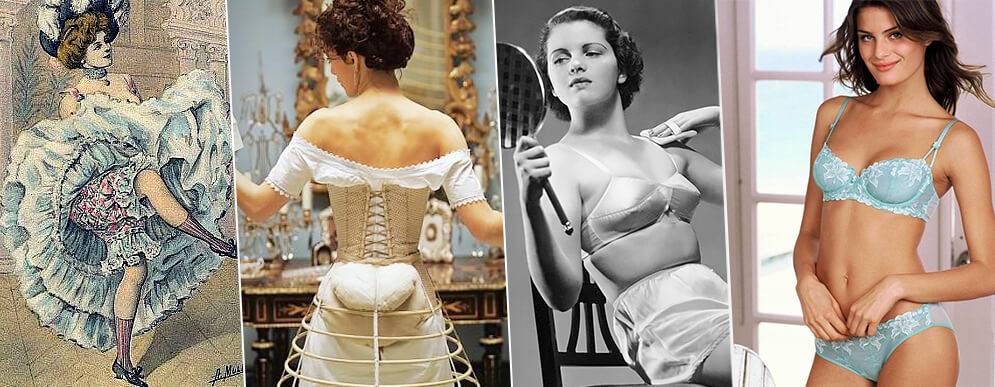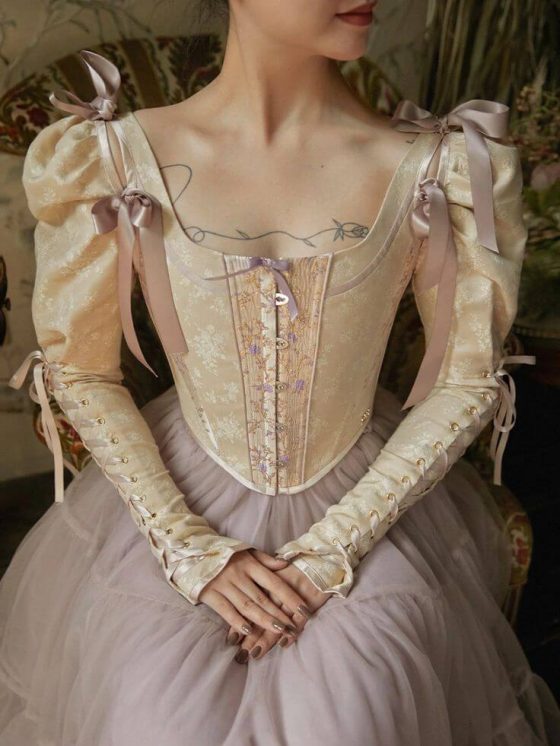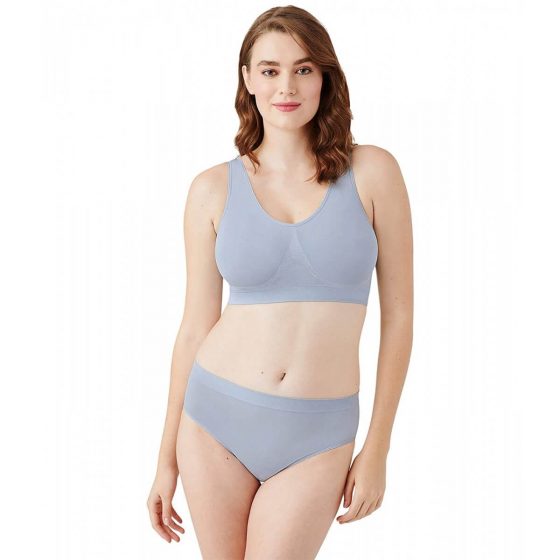The Evolution of Bras: A Brief History

For countless women across the globe, bras hold much more significance than simply being an essential undergarment. They have become an indispensable part of fashion and everyday life that contribute to shaping and defining not only their silhouette but also their confidence and self-expression. As we trace their origins and development, including who invented the bra, we will uncover the unique cultural, societal, and even political implications associated with different styles and forms of bras.
Early Beginnings: Ancient Civilizations and the Bra
Ancient Egypt: Wrapping and Binding of the Breasts
In Ancient Egypt, women used to wrap and bind their breasts tightly with bands of fabric called kalasiris. These wraps were made from materials like linen and were designed to flatten the breasts and provide support.
Ancient Greece: The Apodesmes and the Strophium
During the time of Ancient Greece, women used to wear a breast-supporting garment called an apodesme. This was a strip of fabric or leather that was wrapped around the torso and tied or pinned in place at the front or back, providing lift and support for the breasts. Another popular garment was the strophium, a fabric band or girdle that was worn across the breasts to provide contouring.
Ancient Rome: Brassieres and Breastbands
In Ancient Rome, women used to wear garments called mamillare or fascia, which were similar to modern-day bras. These were made from soft materials like linen or wool and were worn to provide support and shape to the breasts. Additionally, Roman women also wore breastbands called strophium or fascia pectoralis, made of either fabric or leather, to restrain movement and provide extra support.
Medieval Europe: Breast Binding and Corsets
Breast binding was a common practice in medieval Europe, with women using tight-fitting vests or strips of cloth to minimize their breasts’ size. Often, breast binding was performed as a necessity to fit into the tight, restrictive clothing of the period. The late Middle Ages saw the emergence of the corset, a more structured garment that provided overall shaping and support to the torso, including the breasts. While corsets evolved over time and became more elaborate and highly boned, their primary function remained the same – to support and shape the breasts and torso.
The Renaissance and the Development of Corsets: A Cultural and Health Perspective
The Appearance of the Corset in 16th-Century France
The corset as we know it today made its appearance in 16th-century France, where it quickly became an essential component of women’s fashion. The tight-fitting and boned undergarment was initially designed to emphasize a woman’s hourglass figure, with a focus on accentuating the waist and providing ample support to the bust. The French term “corset” was derived from the Old French word “cors,” meaning “body,” representing its fundamental role in shaping women’s bodies.
The Popularity of Corsets Throughout Europe
Corsets soon gained popularity across Europe, with various countries putting their own spin on the garment. In England and Italy, for example, women wore corsets known as “stays” or “busks,” which were heavily boned and aimed to provide a more rigid and structured appearance to the torso. During the 18th century, the corset underwent further modifications, including new designs that focused on flattening the stomach and pushing the breasts upwards while emphasizing a full, rounded bosom. This reshaping of the natural form led to the idealization of a small waist and large bust as the pinnacle of beauty.
The Impact on Women’s Health and Body Image
As corsets grew increasingly popular, their impact on women’s health and body image became a significant concern. The tight constriction of the waist could lead to breathing difficulties and other health problems, as the internal organs were forced to adapt to the unnatural shaping. This extreme modification of the body’s natural form led to the development of “tight-lacing,” a practice in which women would lace their corsets so tightly that they could achieve an unnaturally small waist. This practice, combined with societal pressures to conform to an ideal body shape, contributed to a negative body image for many women who felt they could not achieve the desired look without the help of the corset. As a result, the corset became both a symbol of women’s oppression and a tool for women to achieve the fashionable figure of the time.

The Decline of the Corset and the Birth of the Modern Bra
The Invention of the “Brassiere” by Herminie Cadolle in 1889
During the late 19th century, the corset’s restrictive nature led some women to seek a more comfortable and supportive alternative. French designer Herminie Cadolle answered this need by inventing the “brassiere” in 1889. This revolutionary garment separated the corset into two parts: a lower garment for the waist and an upper garment for the breasts. Cadolle’s brassiere design provided support for the bust without compressing the waist, marking a significant departure from the corset’s function and aesthetic.
Mary Phelps Jacob’s Patented “Backless Brassiere” in 1914
In 1914, American socialite Mary Phelps Jacob patented her invention of the “Backless Brassiere,” a lightweight and soft garment made from silk handkerchiefs and pink ribbon. Jacob’s design offered women a comfortable alternative to the restrictive corset, featuring adjustable straps and a more natural silhouette. This invention marked a crucial turning point in the evolution of women’s undergarments and was a precursor to the modern bra.
The Introduction of Cup Sizes by Ida Rosenthal and William Rosenthal in the 1920s
As the 20th century progressed, fashion trends began to favor more natural body shapes and less restrictive undergarments. This change in preferences led to further innovation in bra design. In the 1920s, Ida Rosenthal and William Rosenthal, founders of the Maidenform company, introduced the concept of cup sizes for bras. This revolutionary idea recognized that women’s breasts came in different shapes and sizes and that a more customized fit was essential for providing proper support and comfort. The introduction of cup sizes allowed women to find bras that better suited their unique bodies, marking a significant advancement in the design and accessibility of women’s undergarments.
The Rise of the Bra in the 20th Century
The Influence of Hollywood and Fashion Trends
The rise of Hollywood during the early 20th century had a significant impact on fashion trends, including the prominence of the bra. As movie stars and celebrities began to grace the silver screen, their glamorous styles and choice of undergarments influenced the preferences of women worldwide. The bra, specifically, was seen as more fashionable and modern than the corset, which had become increasingly associated with outdated and restrictive styles. Hollywood also played a crucial role in popularizing new styles, such as the push-up bra and padded designs, that emphasized a more pronounced and alluring bust.
World War II and the Increased Need for Supportive Undergarments
During World War II, women joined the workforce in large numbers, taking on roles that required physical labor to support the war effort. This shift led to a greater emphasis on practical and supportive undergarments that would provide comfort and flexibility throughout the workday. As a result, the bra became an essential garment for working women, replacing the corset as the standard choice for everyday wear. Additionally, the war led to a reduction in the use of metal within clothing, as materials were needed for military purposes. This change further contributed to the decline of the corset and the increased popularity of the bra.
The Evolution of Posture Correctors: From Rigid Braces to High-Tech Wearables
Posture corrector bras have been around since the early 20th century when they were first used in conjunction with orthopedic braces and corsets to treat spinal deformities and other musculoskeletal disorders. Even though they weren’t as flexible or comfortable as modern correctors, these early devices paved the way for them.
As technology and materials improved in the middle to late 20th century, so did posture correctors, making them more wearable and customizable. Although initially designed for people with conditions like scoliosis, devices to improve posture have recently been marketed to the general public. There has been a proliferation of different types of bras in recent years, from traditional straps and braces to high-tech wearable devices.
The Invention of the Sports Bra in 1977
As women continued to break societal norms and embrace new roles and activities, the demand for specialized undergarments grew. In 1977, the first sports bra, called the “Jogbra,” was invented by Lisa Lindahl, Polly Smith, and Hinda Miller. This revolutionary design was created to provide additional support for women who participated in sports and other physical activities, helping to prevent discomfort and injury. The sports bra gained immediate popularity, leading to the development of various styles tailored to specific sports and levels of intensity. This invention marked a new era in undergarment innovation, catering to the evolving needs of women and encouraging participation in athletic pursuits.

The Bra as a Symbol of Feminism and Women’s Liberation
The “Bra-Burning” Myth of the 1960s
The bra has also been a symbol of feminism and women’s liberation, particularly during the feminist movement in the 1960s. A popular myth emerged that feminists burned their bras as a political statement against the oppressive nature of undergarments and rigid beauty standards. Although no documented instances of bra-burning took place, the myth became a powerful metaphor for the fight against societal expectations placed on women’s bodies, clothing, and self-expression.
Push for More Comfortable and Body-Positive Bras
As the feminist movement continued to gain momentum, women began to demand more comfortable and body-positive bras that focused on providing support and accommodating diverse body shapes, rather than adhering to strict beauty ideals. This push for more comfortable garments challenged traditional bra designs and led to the development of styles such as wireless, soft-cup, and minimizer bras. This emphasis on comfort represented a shift in societal attitudes toward women’s undergarments, reflecting the growing importance of self-acceptance and empowerment.
Diversity in Sizing and Design
The bra industry has evolved over time to become more inclusive and diverse. Brands have started to offer a wider range of sizes and designs to cater to women of various body types, shapes, and sizes, acknowledging that there is no single “perfect” body or fit. Additionally, campaigns advocating for body positivity and realistic portrayals of women’s bodies in advertising have gained prominence, putting pressure on the industry to create products that are more inclusive and representative of the women who wear them. This shift has positioned the bra as a symbol of liberation and self-expression, as women assert their right to choose garments that suit their unique bodies and preferences.
Technological Advances and Innovations in the Bra Industry
The Invention of Underwire and Other Supportive Materials
Technological advancements in materials and design have played a significant role in the evolution of the industry. The invention of the underwire, for instance, revolutionized bra design by providing additional lift and shape for the breasts. Materials such as memory foam and silicone gel have also been incorporated into designs for added comfort and support. As new materials are developed and tested, the industry continues to innovate, offering bras that cater to the diverse needs and preferences of women.
The Shift Towards Sustainable and Eco-Friendly Materials
With increased awareness of environmental issues, the bra industry has started to prioritize ecological responsibility. This shift has led to the adoption of eco-friendly materials, such as organic cotton, bamboo, and recycled polyester, in the production of bras. Furthermore, some brands have introduced “circular” or “cradle-to-cradle” design principles, focusing on creating bras that can be recycled or biodegraded after use. These innovations not only reduce the environmental impact of bra manufacturing but also meet the growing demand for sustainable options among consumers.
The Rise of Custom-Fit and Adjustable Bras
As customer preferences continue to evolve, the industry has responded with a focus on personalization and customization. Custom-fit bras, which are made using a woman’s unique measurements, have become increasingly popular. This trend towards personalization reflects the bra industry’s ongoing commitment to catering to the diverse preferences and requirements of women, demonstrating how technology and innovation continue to shape the evolution of this essential garment.
Conclusion
Throughout history, the bra has continuously evolved to meet the needs and desires of women, adapting to shifting fashion trends, societal norms, and technological advancements. From the simple breast-binding garments of ancient civilizations to the modern diversity of styles and materials, the bra has undergone a remarkable transformation, reflecting the changing roles, expectations, and aspirations of women across time. Understanding the history of the bra provides valuable insights into how this essential garment has shaped, and been shaped by, women’s experiences, serving as both a functional necessity and a symbol of self-expression, empowerment, and liberation.
